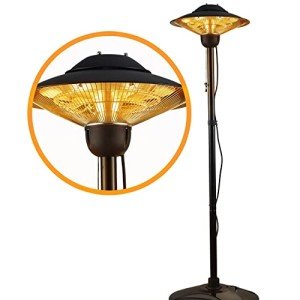How to Choose a Patio Heat Lamp Electric

When it comes to heating your patio, you've got numerous options. electric patio heater outdoor are more convenient than propane models that require fueling. They can be heated in a matter of minutes by pressing a button, or flicking a switch.
They also don't release gasses that might pose a health risk. Some offer adjustable heat settings for different distances.
Type of Heater
With the appropriate patio heater, you can comfortably enjoy your outdoor living spaces into the night and across the seasons. Patio heaters are available in many different types that include freestanding propane or natural gas models and wall- or ceiling mounted electric radiant heaters. Your choice will be based on the size of your space, power sources available, and your personal preferences.
The majority of patio heaters utilize electricity, liquid or natural gas to generate heat. They emit heat via a combination convection heating and radiant heating. Their output of heat is measured in watts, and can be converted to British thermal units (BTUs) for comparison. waterproof electric patio heaters have adjustable heating settings to allow for greater flexibility.
A patio heat lamp is the burner on top of a pole with a perforated metal screen that reflects the flames and radiates the heat downwards to warm furniture, people and other objects. Some have a reflector above the burner, which can be plated with silver to decrease the amount of heat emitted upwards.
Gas patio heaters are among the most commonly used patio heaters. They can heat multiple tables quickly and evenly. These patio heaters are portable and can run on a propane tank or plumbed in to your natural gas line. This is more convenient and has lower upfront costs, however it requires fuel.
Gas patio heaters are becoming increasingly popular as more homes are equipped with natural gas lines. They are simple to install, but they require a gas line that is properly installed and functioning to ensure safety. Portable natural gas heaters come with extension hoses to overcome this limitation, but they can pose a tripping hazard and may pose an additional fire risk when not in use.
Safety
The majority of electric patio heaters are safe to use in enclosed areas since they allow heat to radiate outward instead of upwards towards things that ignite, like the roof. They are not designed to be used under a non-protected roof. The heater should be placed at a minimum of 6" away from the ceiling, or 18" away from the adjacent wall to avoid fire hazards.
Gas and propane patio heaters can only be installed in enclosed areas that are fitted with durable covers designed for outdoor use. These covers are usually made of fire-retardant fabric and have a roof which can be closed. These kinds of patio heaters are prone to safety concerns related to the flames and fumes they produce. They should be kept away from any objects that could ignite, such as curtains and chairs.
When installing a patio heat lamp electric or any kind of patio heater, make sure you adhere to the manufacturer's instructions and safety guidelines carefully. Choose a system that has UL and CSA safety certifications and be sure to read the user's manual thoroughly. Make sure the heater is out of reach of pets and children. Some patio heaters that stand on their own, such as EUROM's, include a tipping safety feature that shuts down the device if it falls.
If your patio heater is connected to natural gas lines it is important to examine the condition of the line on a regular basis and be tested for leaks by a qualified professional. If the line needs to be replaced get it replaced by an experienced plumbing professional who is licensed. A professional will be able to determine if the line has been properly routed or if it should be routed through an underground pipe. In addition, a professional can make sure the patio heater is plugged into an outlet that's GFCI (ground fault circuit interrupter) designed to guard against electrical shocks and fires.
Installation
The height of the patio heater determines how much heat it radiates into the space. The heater should be placed away from surfaces such as wood and plastic that can deform. Depending on the model of the heater you may choose to mount it on a wall or a structure using standard mounting brackets. Certain models have a soft starter that lowers the maximum current to protect your circuits.
